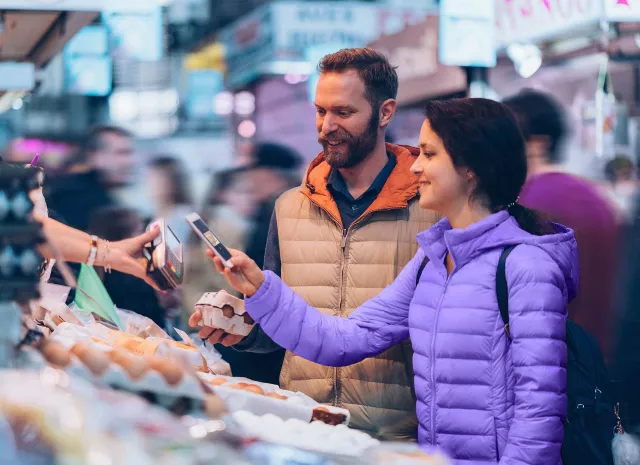Payments in the new normal: a post-covid outlook

When COVID-19 hit the world early 2019, countries around the world started introducing measures to slow down the spread of the virus. Only a handful of stores, such as supermarkets and pharmacies, were allowed to keep their doors open. The vast majority, from clothing stores to restaurants, were forced to close their shopfronts and adapt their business models to accommodate the fast-growing demand for online orders.
While the move to online purchases was only intended as temporary for some consumers, this shift in consumer behavior seems to have a lasting effect. In the second half of 2021, the popularity of online payments has barely waned. Let’s take a closer look at how COVID-19 has changed consumer behavior around payments – and what this means for payment providers going forward.
The move towards digital
While the switch to online purchases may have been forced upon the world almost overnight, this wasn’t an entirely new trend. Online purchases were already on the rise – they were just increasing at what would now be called a snail’s pace. But between lockdown decrees and a general reluctance to leave the safety of their homes, many who had previously avoided online purchases changed the way they shop – and what began as a necessity fast became a preference.
Today people across the world are taking advantage of digital offerings such as online shopping services around grocery and restaurant delivery1. In Europe, for instance, online grocery shopping experienced a growth of around 55 percent in 2020, compared with an average gain closer to 10 percent the year before2. Similar developments can also be found across North America3. As a result, digital and contactless payments have seen a substantial increase. Mastercard, for instance, reported a 40% global increase in contactless payments in the first quarter of 20204 as cash usage declined significantly. The UK alone recorded a 50% decrease in cash usage within a week after first lockdown measures were introduced5. While exact numbers may vary, the overall direction seems to be consistent across countries. Consequently, businesses had to quickly build up e-commerce capabilities to accommodate changes in consumer behavior related to COVID-196.
As the world slowly returns to a post-covid world, there is no way back to what the world of payments looked like before the pandemic hit. Instead, payment providers will need to embrace these changes – and build customer-centric, secure payments experiences that will allow them to adapt to this new normal.
A difficult environment to navigate
The move to digital in the world of payments offers great opportunity. However, with greater uptake comes greater risk:
Favorable conditions for Fraud
Online payments aren’t as secure as in-store EMV PIN purchases, which require a buyer to hold a physical card and type in a PIN. Given the uptake of online purchases in the older, often less tech-savvy population, this creates favorable conditions for fraudsters looking to take advantage. From fake links in text messages, emails for non-existent package tracking to fake payment portals, fraudsters have become quite sophisticated in how they target vulnerable customers – making digital security and fraud prevention a major area of investment for payment providers going forward.
Chargebacks
The pandemic sparked a substantial increase in the number of chargebacks and disputes. From travel plans that could no longer be completed to payments related to subscriptions and memberships severely impacted by covid restrictions – COVID-19 has created friction points for both consumers as well as businesses7. Additionally, there has been a great increase in illegitimate chargebacks where customers exploit a product or service only to ask for a refund later. As a result, streamlining data flows to eliminate the need for chargebacks and processing those that come through more efficiently has become a priority.
Where are we headed?
It’s official: the popularity of online purchases and payments is here to stay. Every business should be cognizant of this fact, while also understanding the risks that this rise presents. The move to digital requires payment providers to future-proof their business by prioritizing stronger security, advanced authentication and better transaction decisioning8. In addition, both system and operational resiliency need to be a focus. Financial institutions will need to enhance and improve their existing infrastructure to be able to support this change - moving to the cloud can be a major success factor to support this transformation journey.
1 Ten charts show how COVID-19 is affecting consumers in Europe | McKinsey
2 A year like no other for European grocery retailers: The state of the industry post 2020 | McKinsey
3 The great consumer shift: Ten charts that show how US shopping behavior is changing | McKinsey
4 Mastercard’s Contactless Transactions Jump More Than 40% Amid Coronavirus Crisis - WSJ
5 COVID-19: 10 Impacts on Payments | Accenture
6 Realizing the Digital Promise: COVID-19 Catalyzes and Accelerates Transformation | Deloitte | Financial Services
7 Three ways COVID-19 is changing the payments industry | EY UK
8 Three ways COVID-19 is changing the payments industry | EY UK


